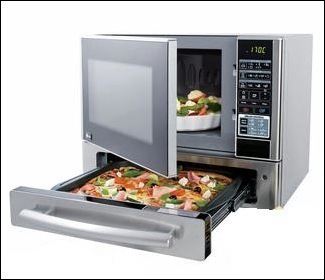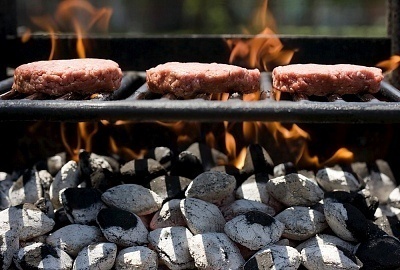When looking at a microwave, one of the things they often times see is a metal rack in there which causes confusion. However, people have always been taught that putting metal in the microwave is incredibly dangerous and can destroy the microwave. The question that they ask, then, is: why can't I put aluminum foil, for example, into the microwave, but I can have a metal rack? The answer lies in the way the atoms of metal work and how a microwave works.
A microwave heats up what is put in it by exciting the electrons in atoms. Microwave energy rushes over the object and as that happens, the electrons of the food begin to bounce around. As they bounce around, they generate kinetic energy which results in heat. This heat is what cooks the food and has it hot and ready to eat when it is removed from the microwave. However, it is this exact phenomenon that makes it dangerous to put metal in.
In metal, the electrons are mobile and can move freely. This is problematic because a piece of aluminum foil is so thin, there is no room for the metal ions to move around. Therefore, when the aluminum foil is heated, the electrons start to get excited and begin to bounce around. As they bang into other aluminum atoms, those atoms begin to knock around and this results in all the atoms beginning to bounce. This generates heat. When the foil reaches a certain temperature, it catches on fire and can destroy the microwave, but also cause fire elsewhere if it is not dealt with promptly.
With a fork or a knife, there are sharp points which can be prickly. This can result in static electricity. As the electrons are heated, they congregate on the tips of the fork or knife. This causes them to have an increased negative charge. After a certain point is reached, the electrons begin to jump off of of the fork which causes sparks. It looks like tiny bits of lightning.
The question, then, is why doesn't a metal rack have the same problem? The reason is because of the shape of the rack. The rack is thick, rounded, smooth and has no sharp jagged edges. That means that there is enough space for the excited electrons to bounce around. They rarely hit an atom and if they do hit one, it doesn't cause any problems because it only hits one atom at a time rather than numerous ones. Therefore, the rack never gets excited enough to heat up.




Follow Us!